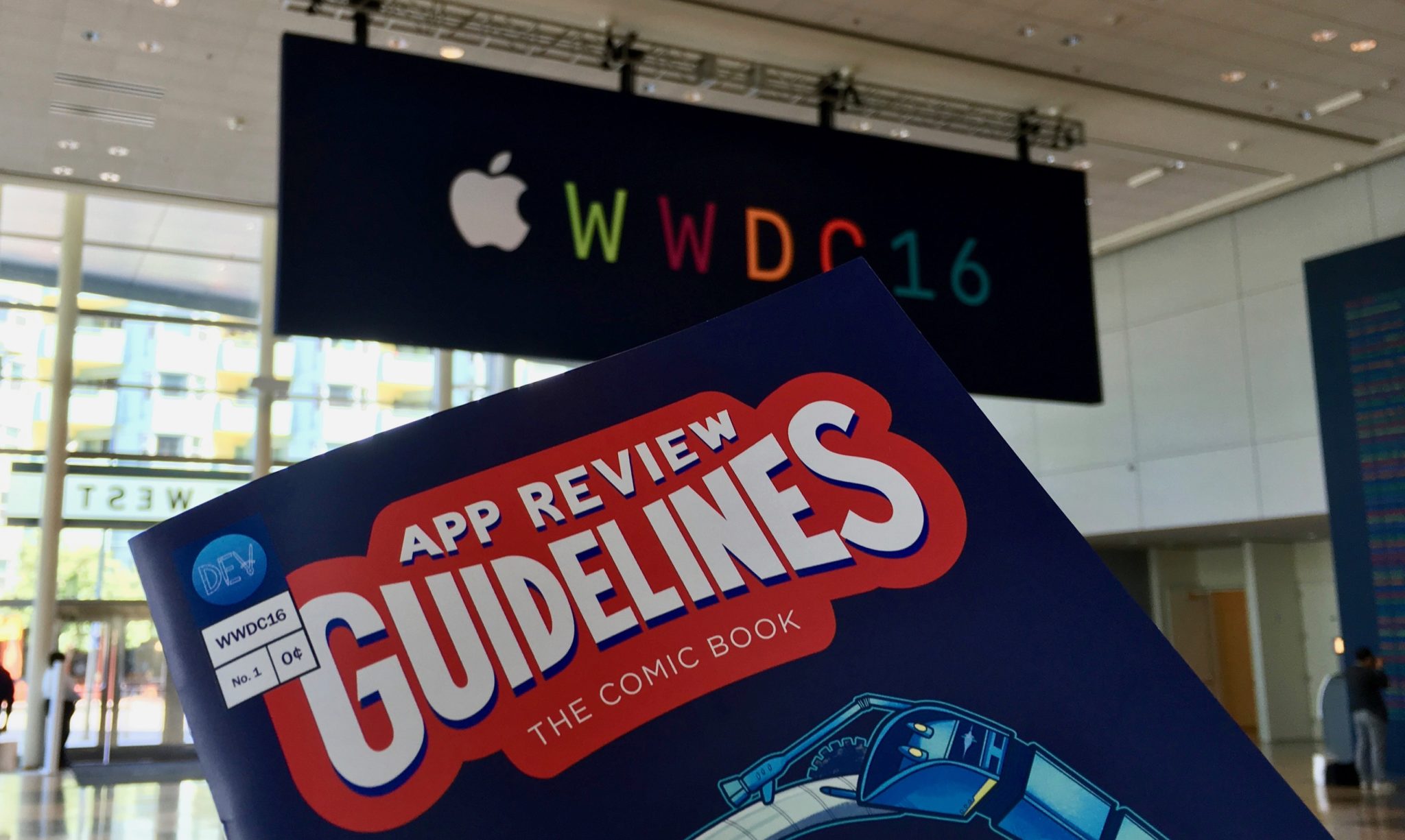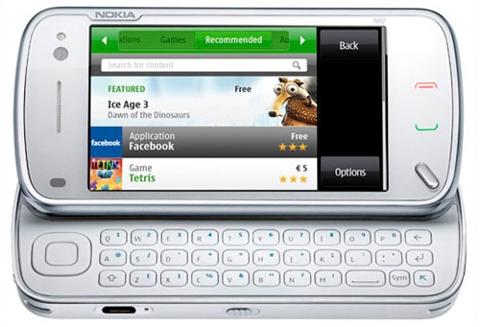[caption id="attachment_138519" align="aligncenter" width="1360"]

Mac App Store WWDC 2016[/caption] Dig into the Mac App Store, and you’ll probably find what you’re looking for – or something similar. Unlike its iOS counterpart, the Mac App Store (MAS) is loaded with enough useless bloat to drown it. That might be what Apple should do to it, too. Recently,
HowToGeek dug a bit deeper into the Mac App Store's problem with bad apps. Searching for something as simple as ‘Microsoft Excel’ should give you what you want: Microsoft’s Excel app for macOS, or a note that it’s not available (while offering suggestions for ‘similar’ apps). Instead, that search returns a slew of apps that work with Excel – such as template pickers – but no actual Excel app from Microsoft, likely because it isn’t available on the MAS (and there’s no mechanism that tells the user that). Apple doesn’t even have the foresight to recommend its own Excel challenger, Numbers, as a replacement. A quick Web search for ‘Microsoft Excel for Mac’ surfaced Microsoft’s Office homepage, where I was able to start the download process in about five clicks. And this is a problem; not because Apple seems to be purposefully ignoring the MAS, but because it holds its desktop app portal on high for developers. As with the
iOS App Store, distributing to the MAS is streamlined right into an Apple developer account. The difference: Apple lets Mac developers distribute apps on their own. In what some view as a quiet acknowledgement that the MAS is a broken platform, Apple has
language for developers who want to distribute software outside of it, and provides a sort of ‘best practices’ for success on macOS. Instead of a destination, the Mac App Store feels like a mini-storage for apps. [caption id="attachment_138521" align="aligncenter" width="3563"]

App Review Guidelines Comic WWDC 2016[/caption]
Mac App Store Doesn’t Help Pros
The inclusion of apps clearly meant to dupe users and turn a profit sends a mixed message about what good apps are, and who should be able to distribute them via the MAS. It proves that, so long as you pay the fee for an Apple developer account, you can distribute whatever app you like to the various app stores, so long as it falls within Apple’s parameters. And that’s a dated concept. Just because Apple executives spend keynotes boasting about the number of MAS apps available doesn't mean that users want a sizable portion of those apps. The size of the MAS also means less to an audience of developers who are likely seeing limited income as a result of competition with bogus apps; the only sentiment echoing through the halls at a WWDC or I/O keynote, after that inevitable executive mention of an app store’s total volume, is that most apps are unworthy of being there. (Apple is currently in the process of culling old apps from the iOS App Store, but it needs to do a better job of catching them
before they hit the store.) But it’s a hit-and-miss venture anyway. User behavior studies show that
most consumers drop an app cold after one day, with most leaving after the first week. One month into an app’s lifecycle, about 90 percent of users have moved on. To that, we can question how damaging those bootleg ‘Microsoft Excel’ apps really are. Given the volume, we’d have to say they hurt enough. A perfect example is an app called ‘
Easy To Use! Microsoft Excel Edition,’ which sells for $12.99. It’s an app that links to various Excel how-to videos. It’s
not Excel, nor does it offer anything you can
use with Excel (such as templates). The app also has 16 reviews, all one-star. It gets better, though: there’s another app with
the same name, offering the same links to video tutorials… it just doesn’t have the exclamation point. It was distributed by ‘Tony Walsh.’ Exclamation point version? ‘Anthony Walsh.’ They were both updated on November 22. If Apple can boot a developer for
sourcing fake reviews, why can’t it suspend the account(s) of Anthony/Tony Walsh until the owner of those accounts verifies his/their identity? That hands-off approach is Apple’s core issue, here. [caption id="attachment_138517" align="aligncenter" width="1222"]

Mac App Store reviews for Excel tutorial app[/caption]
Should Apple Ditch the Mac App Store?
The short answer is ‘no,’ but the long-form rebuttal leans towards Apple making a big move that effectively kills the current model. Just as we question how negatively bad apps affect developers, we should ask how the Mac App Store can be changed to help those making apps. Developers no longer need the Mac App Store. Clever launch-day tactics can help a good developer maximize exposure when it matters; ongoing efforts can make a lasting impression and create synergy to help keep an app viable and discussed. Apps making a viable home outside of the MAS bring up a good question for developers, too: what warrants the 30 percent cut Apple takes when you sell an app via the MAS? As-is, the MAS simply handles a lot of boilerplate concerns for
selling and distributing apps. Again, it made sense years ago; just as app
discovery before Product Hunt and SEO was more difficult, hosting and selling goods online was fussier all those years ago. Now, it’s as simple as hosting the app, creating a Wix landing page and weaving a Stripe or Square API in for payment processing. If you want to get really bold, Square lets you send funds to your bank account instantly. And that’s without Apple’s 30 percent take (Square only takes
about 4 percent as a processing fee for instant deposits). Furthermore, you can develop for new Apple technologies such as
Touch Bar and still distribute on your own; nothing about the Mac or macOS is
proprietary to the MAS. The real problem is the Mac App Store now serves as a prominent vehicle for shady developers to host and distribute sketchy apps (would Anthony/Tony Walsh take the time to create a landing page and process payments? I doubt it). Apple should completely change its business model to eliminate poorly received or contrived apps and surface those that are ‘tried and true’ for users. A simple ‘essentials’ tag no longer cuts it. Apple should be swimming upstream in this ‘race to the bottom’ we find ourselves in. Making a few hard decisions that affect the bottom line short-term will do a lot for
pros who are questioning Apple’s dedication to them. If Apple made some simple alterations to the Mac App Store, a room full of developers might change their tune at WWDC. Saying you have two million apps on your app store is nice; giving developers a sense of pride in having their app be one of a few thousand good ones is better.
 Mac App Store WWDC 2016[/caption] Dig into the Mac App Store, and you’ll probably find what you’re looking for – or something similar. Unlike its iOS counterpart, the Mac App Store (MAS) is loaded with enough useless bloat to drown it. That might be what Apple should do to it, too. Recently, HowToGeek dug a bit deeper into the Mac App Store's problem with bad apps. Searching for something as simple as ‘Microsoft Excel’ should give you what you want: Microsoft’s Excel app for macOS, or a note that it’s not available (while offering suggestions for ‘similar’ apps). Instead, that search returns a slew of apps that work with Excel – such as template pickers – but no actual Excel app from Microsoft, likely because it isn’t available on the MAS (and there’s no mechanism that tells the user that). Apple doesn’t even have the foresight to recommend its own Excel challenger, Numbers, as a replacement. A quick Web search for ‘Microsoft Excel for Mac’ surfaced Microsoft’s Office homepage, where I was able to start the download process in about five clicks. And this is a problem; not because Apple seems to be purposefully ignoring the MAS, but because it holds its desktop app portal on high for developers. As with the iOS App Store, distributing to the MAS is streamlined right into an Apple developer account. The difference: Apple lets Mac developers distribute apps on their own. In what some view as a quiet acknowledgement that the MAS is a broken platform, Apple has language for developers who want to distribute software outside of it, and provides a sort of ‘best practices’ for success on macOS. Instead of a destination, the Mac App Store feels like a mini-storage for apps. [caption id="attachment_138521" align="aligncenter" width="3563"]
Mac App Store WWDC 2016[/caption] Dig into the Mac App Store, and you’ll probably find what you’re looking for – or something similar. Unlike its iOS counterpart, the Mac App Store (MAS) is loaded with enough useless bloat to drown it. That might be what Apple should do to it, too. Recently, HowToGeek dug a bit deeper into the Mac App Store's problem with bad apps. Searching for something as simple as ‘Microsoft Excel’ should give you what you want: Microsoft’s Excel app for macOS, or a note that it’s not available (while offering suggestions for ‘similar’ apps). Instead, that search returns a slew of apps that work with Excel – such as template pickers – but no actual Excel app from Microsoft, likely because it isn’t available on the MAS (and there’s no mechanism that tells the user that). Apple doesn’t even have the foresight to recommend its own Excel challenger, Numbers, as a replacement. A quick Web search for ‘Microsoft Excel for Mac’ surfaced Microsoft’s Office homepage, where I was able to start the download process in about five clicks. And this is a problem; not because Apple seems to be purposefully ignoring the MAS, but because it holds its desktop app portal on high for developers. As with the iOS App Store, distributing to the MAS is streamlined right into an Apple developer account. The difference: Apple lets Mac developers distribute apps on their own. In what some view as a quiet acknowledgement that the MAS is a broken platform, Apple has language for developers who want to distribute software outside of it, and provides a sort of ‘best practices’ for success on macOS. Instead of a destination, the Mac App Store feels like a mini-storage for apps. [caption id="attachment_138521" align="aligncenter" width="3563"]  App Review Guidelines Comic WWDC 2016[/caption]
App Review Guidelines Comic WWDC 2016[/caption]
 Mac App Store reviews for Excel tutorial app[/caption]
Mac App Store reviews for Excel tutorial app[/caption]



